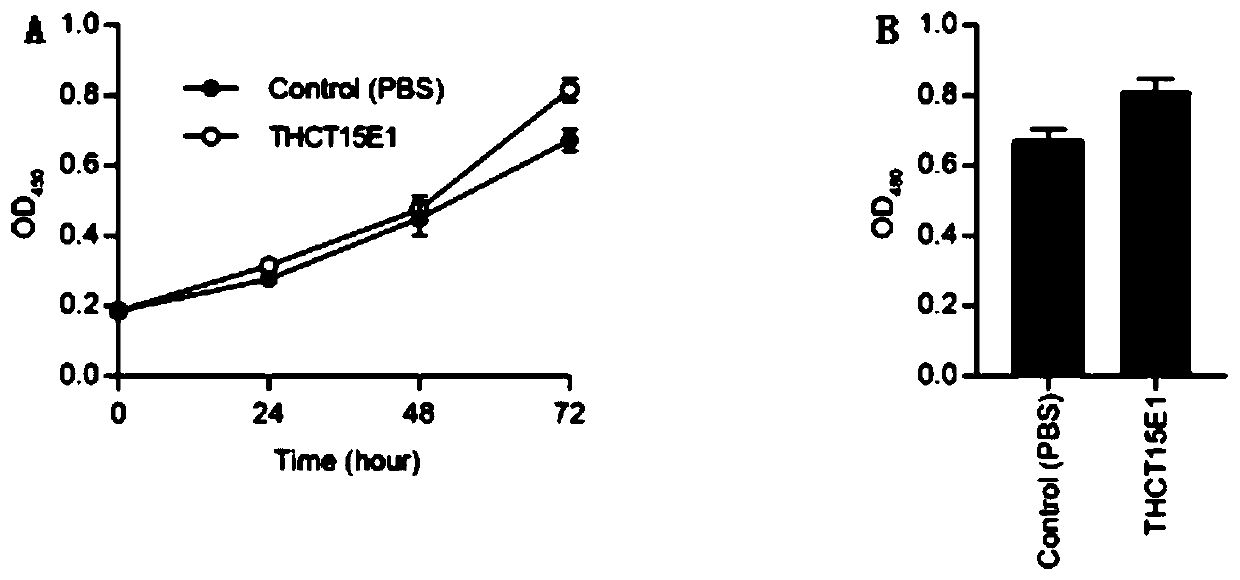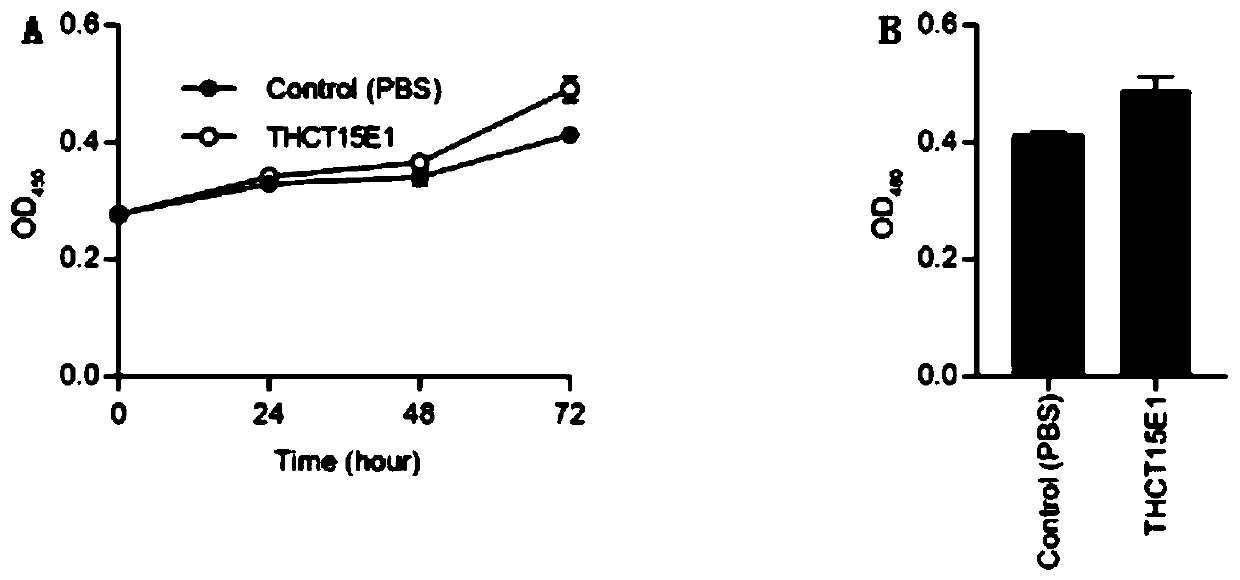Fusobacterium nucleatum polymorphic subspecies isolate and application thereof
A technology of fusobacterium nucleatum and isolates, which is applied in the direction of bacteria, analytical materials, biological material analysis, etc., can solve the problem of not being able to represent the actual characteristics of fusobacterium nucleatum, and achieve the effect of promoting proliferation
- Summary
- Abstract
- Description
- Claims
- Application Information
AI Technical Summary
Problems solved by technology
Method used
Image
Examples
Embodiment 1
[0026] THCT15E1 was co-cultured with colorectal cancer HCT116 cell line, and the specific operation steps were as follows:
[0027] The cultured HCT116 cell suspension was prepared by trypsinization, counted and inoculated into a 24-well plate (1×10 5 cells / well), cultured for 12-24 hours until the cells adhered. After adhering to the wall, wash with PBS and replace the medium without anti-antibody. Freshly prepared THCT15E1 bacteria were suspended in PBS, and the bacterial suspension was added to the experimental group (1×10 8 CFU / well); the control group was added with an equal volume of PBS. Three replicate holes were made for each group. cultured under normal conditions. The cell proliferation activity was detected by CCK8 method at 6 hours, 24 hours, 48 hours, and 72 hours of culture respectively. The bacterial suspension was replaced every 24 hours.
[0028] Depend on figure 1 It can be seen that the proliferation activity of HCT116 cells at 72 hours was signifi...
Embodiment 2
[0030] THCT15E1 was co-cultured with colorectal cancer LoVo cell line, the specific operation steps are as follows:
[0031] The cultured LoVo cell suspension was prepared by trypsinization, counted and inoculated into 24-well plates (1×10 5 cells / well), cultured for 12-24 hours until the cells adhered. After adhering to the wall, wash with PBS and replace the medium without anti-antibody. Freshly prepared THCT15E1 bacteria were suspended in PBS, and the bacterial suspension was added to the experimental group (1×10 8 CFU / well); the control group was added with an equal volume of PBS. Three replicate holes were made for each group. cultured under normal conditions. The cell proliferation activity was detected by CCK8 method at 6 hours, 24 hours, 48 hours, and 72 hours of culture respectively. The bacterial suspension was replaced every 24 hours.
[0032] Depend on figure 2 It can be seen that the proliferation activity of LoVo cells at 72 hours was significantly high...
PUM
 Login to View More
Login to View More Abstract
Description
Claims
Application Information
 Login to View More
Login to View More - R&D
- Intellectual Property
- Life Sciences
- Materials
- Tech Scout
- Unparalleled Data Quality
- Higher Quality Content
- 60% Fewer Hallucinations
Browse by: Latest US Patents, China's latest patents, Technical Efficacy Thesaurus, Application Domain, Technology Topic, Popular Technical Reports.
© 2025 PatSnap. All rights reserved.Legal|Privacy policy|Modern Slavery Act Transparency Statement|Sitemap|About US| Contact US: help@patsnap.com


